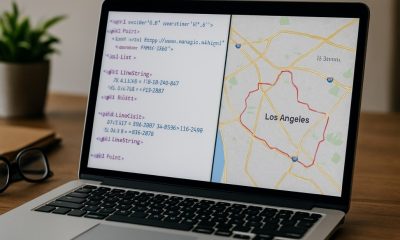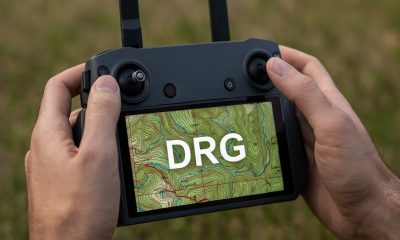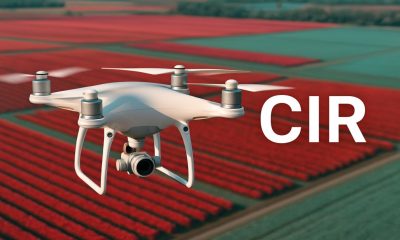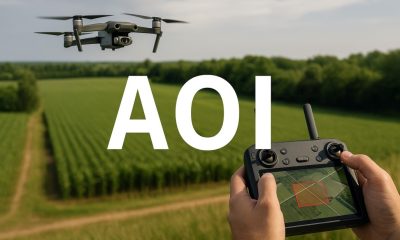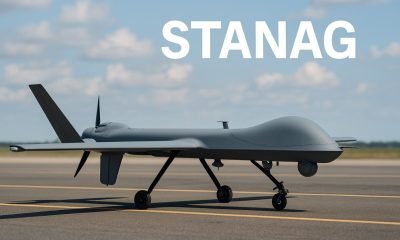- Acronym Guide
- AAM
- ABS
- AC
- ACAS
- ADS-B
- AFAC
- AGL
- AI
- AIM
- ALS
- AM
- AMA
- ANSP
- AOI
- APPI
- AUV
- AUVSI
- ARPAS-UK
- ASTM
- ATC
- BVLOS
- CAA
- CAAC
- CAB
- CASA
- CATT
- CBO
- CBR
- CBRN
- CDMA
- CDR
- CFR
- CIR
- COA
- COMINT
- CORS
- COTP
- COTR
- CPTED
- CV
- C2
- DAA
- DEM
- DFI
- DFS
- DGCA
- DHS
- DOD
- DPA
- DPEs
- DRG
- DRO
- DSM
- DSMX
- DSP
- DSSS
- DTM
- EASA
- EFT
- EO
- EOD
- EO/IR
- ELINT
- EMI
- ESC
- EVLOS
- eVTOLs
- FAA
- FCC
- FCS
- FHSS
- FICCI
- FLIR
- FOB
- FOV
- FPS
- FPV
- GBDAA
- GCP
- GCS
- GDPR
- GML
- GNSS
- GPS
- GSD
- GVC
- HDR
- HOGE
- IACRA
- ICAO
- ICS
- IMU
- INS
- IR
- ISA
- ISR
- ITU
- JARUS
- LAAMS
- LAANC
- LAATM
- LAI
- LBA
- LIDAR
- LOS
- LSALT
- MAC
- MAVLink
- MLIT
- MMS
- MSL
- MTOM
- NDAA
- NCSL
- NFZ
- NIST
- NMEA
- NOTAM
- NPA
- NPRM
- NTIA
- OBIA
- OEM
- OFDM
- OOP
- PASM
- PAV
- PCV
- PdM
- PEC
- PIC
- PID
- PIPL
- PLD
- PM
- PN
- PPK
- PPS
- PSM
- PWM
- UAM
- UAOP
- UAS
- UASTM
- UAV
- UCAVs
- UHD
- UHF
- USV
- UTM
- RAIM
- RCC
- RCS
- RFI
- ReOC
- RePL
- RMS
- ROI
- RPAS
- RPC
- RTH
- RTK
- SaR
- SAR
- SARP
- SBAS
- S.Bus
- SBIR
- SEDENA
- SfM
- SFOC
- SIGINT
- SLAM
- SMS
- SORA
- STANAG
- STTR
- sUAS
- TCAS
- TCCA
- TFR
- TIN
- TOF
- TP
- TPS
- TSA
- VHF
- VLOS
- VTOL
Drone Acronyms
What is BVLOS (Beyond Visual Line of Sight) & How Does it Work?
By
Jacob StonerTable Of Contents
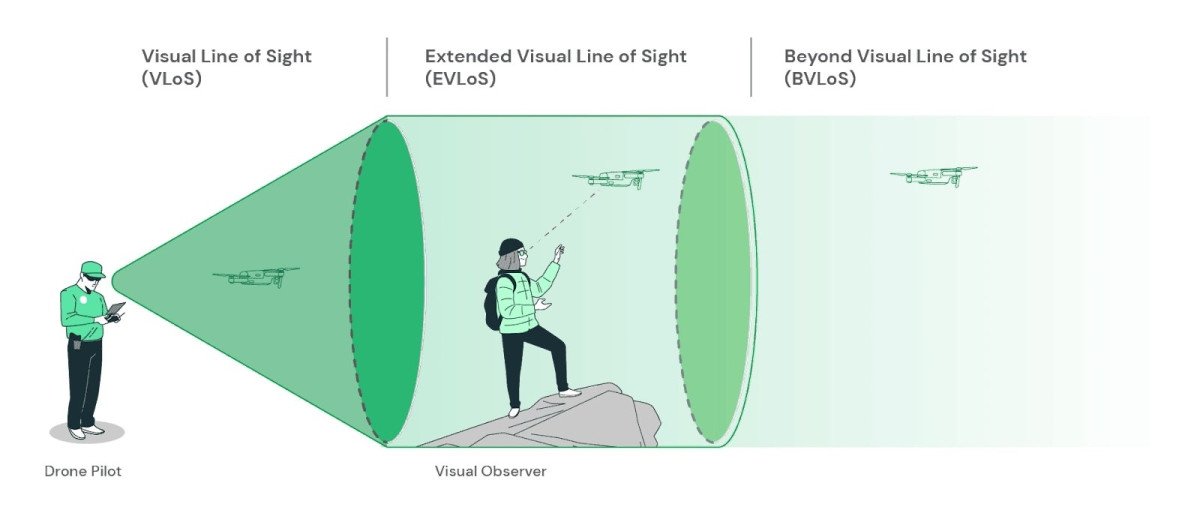
Definition
BVLOS stands for Beyond Visual Line of Sight. It refers to drone operations conducted beyond the pilot’s visual range, requiring advanced communication and navigation systems to control the aircraft safely.
Relevance to the Industry
BVLOS capabilities significantly expand the potential uses of drones, allowing for more efficient and effective operations. By operating beyond the visual line of sight, drones can cover more ground, access remote locations, and perform tasks that would be challenging or impossible within visual line-of-sight limitations. This capability is crucial for scaling commercial drone operations and improving service delivery in various sectors.
How Does BVLOS Work?
Beyond Visual Line of Sight (BVLOS) operations allow drones and unmanned aerial systems (UAS) to operate beyond the direct visual range of the pilot. This capability expands the potential uses and efficiency of drones. Here’s a detailed look at how BVLOS operations work:
1. System Components
- Unmanned Aerial Vehicle (UAV): The flying component, equipped with advanced sensors and communication systems to operate safely beyond visual range.
- Ground Control Station (GCS): The remote control center where operators manage and monitor the UAV’s flight. This includes advanced flight control software, monitoring displays, and communication interfaces.
- Communication Link: The robust data link connecting the UAV to the GCS, enabling real-time data transmission and control commands over long distances.
2. Navigation and Control Systems
- Autopilot System: Onboard computers that control the UAV’s flight path, altitude, and speed. These systems use input from GPS, gyroscopes, accelerometers, and other sensors to navigate autonomously.
- Remote Pilot Control: The pilot can control the UAV via the GCS, sending commands through the communication link. This includes manual adjustments to the flight path and response to dynamic situations.
- Detect and Avoid (DAA) Systems: Technologies that enable the UAV to detect other aircraft, obstacles, and hazards, and take evasive actions to avoid collisions. This is crucial for safe BVLOS operations.
3. Communication Systems
- Data Link: A high-reliability communication channel that facilitates continuous two-way communication between the UAV and the GCS. This includes telemetry data (e.g., position, speed, altitude) and control commands.
- Satellite or Cellular Communication: In some BVLOS operations, satellite or cellular networks are used to maintain communication over extended ranges, ensuring constant connectivity even in remote areas.
4. Operational Phases
- Pre-Flight Planning: Extensive planning is required for BVLOS missions, including risk assessments, route planning, and defining waypoints. Operators must ensure compliance with regulatory requirements and obtain necessary permissions.
- Takeoff and Launch: The UAV can be launched manually or autonomously, with the autopilot system taking control to reach the desired altitude and start the mission.
- Mission Execution: The UAV follows the pre-defined flight path autonomously, performing tasks such as data collection, surveillance, or delivery. The GCS continuously monitors the UAV’s performance and environmental conditions.
- Detect and Avoid Operations: During the flight, DAA systems actively monitor the UAV’s surroundings, detecting potential hazards and adjusting the flight path to avoid collisions.
- Real-Time Monitoring and Control: Operators at the GCS can make real-time adjustments to the flight plan, respond to dynamic situations, and ensure mission objectives are met safely.
- Landing and Recovery: The UAV returns to a designated landing area, guided either autonomously or manually by the remote pilot. Safe landing procedures ensure the UAV is ready for subsequent missions.
5. Applications and Use Cases
- Long-Range Surveillance and Security: Monitoring large or remote areas for security purposes, border patrol, and wildlife conservation.
- Infrastructure Inspection: Inspecting extensive infrastructure such as pipelines, power lines, and railways over long distances.
- Agriculture: Surveying large agricultural fields, monitoring crop health, and managing resources efficiently.
- Delivery Services: Transporting goods, medical supplies, and other items over long distances, especially to remote or hard-to-reach areas.
- Environmental Monitoring: Collecting data on weather patterns, climate change, and natural resources in remote regions.
Understanding the workings of BVLOS operations reveals the advanced technology and regulatory frameworks necessary for safe and effective long-range drone missions. These capabilities significantly enhance the potential applications and benefits of unmanned aerial systems in various industries.
Example in Use
“Pipeline inspection companies utilize BVLOS drones to monitor extensive pipeline networks, reducing the need for manual inspections and improving safety.”
Frequently Asked Questions about BVLOS (Beyond Visual Line of Sight)
1. What is BVLOS in drone operations?
Answer: BVLOS (Beyond Visual Line of Sight) refers to drone operations where the aircraft is flown beyond the pilot’s direct line of sight. These operations require advanced technologies for navigation and communication, such as GPS, onboard sensors, and reliable communication links. BVLOS enables drones to perform tasks over larger areas and longer distances without the need for the pilot to maintain visual contact with the drone.
2. How do you get BVLOS permission?
Answer: Obtaining BVLOS permission involves meeting specific regulatory requirements set by aviation authorities, such as the FAA in the United States or Transport Canada. The process generally includes:
- Submitting an Application: Operators must submit a detailed application outlining the planned BVLOS operations, safety measures, and technology used.
- Safety Assessment: Demonstrating the ability to safely conduct BVLOS flights, including risk assessments and mitigation strategies.
- Training and Certification: Ensuring that pilots and operational teams are adequately trained and certified for BVLOS operations.
- Technology Requirements: Utilizing reliable communication systems, detect-and-avoid technologies, and robust navigation systems.
Each regulatory body has its own set of guidelines and approval processes, so it’s essential to consult the relevant authority for specific requirements.
3. What are the benefits of BVLOS operations?
Answer: BVLOS operations offer several benefits:
- Increased Coverage: Ability to monitor and survey large areas without the need for multiple takeoffs and landings.
- Efficiency: Reduces the time and resources needed for tasks such as inspections, mapping, and data collection.
- Access to Remote Areas: Enables operations in areas that are difficult to reach or unsafe for manual inspection.
- Cost Savings: Reduces the need for human labor and increases the efficiency of operations, leading to cost savings.
- Improved Data Collection: Provides comprehensive and continuous data collection over extended distances, enhancing the quality and accuracy of information gathered.
These benefits make BVLOS a critical capability for scaling drone operations and improving the effectiveness of various applications.
For examples of these acronyms visit our Industries page.
As the CEO of Flyeye.io, Jacob Stoner spearheads the company's operations with his extensive expertise in the drone industry. He is a licensed commercial drone operator in Canada, where he frequently conducts drone inspections. Jacob is a highly respected figure within his local drone community, where he indulges his passion for videography during his leisure time. Above all, Jacob's keen interest lies in the potential societal impact of drone technology advancements.


